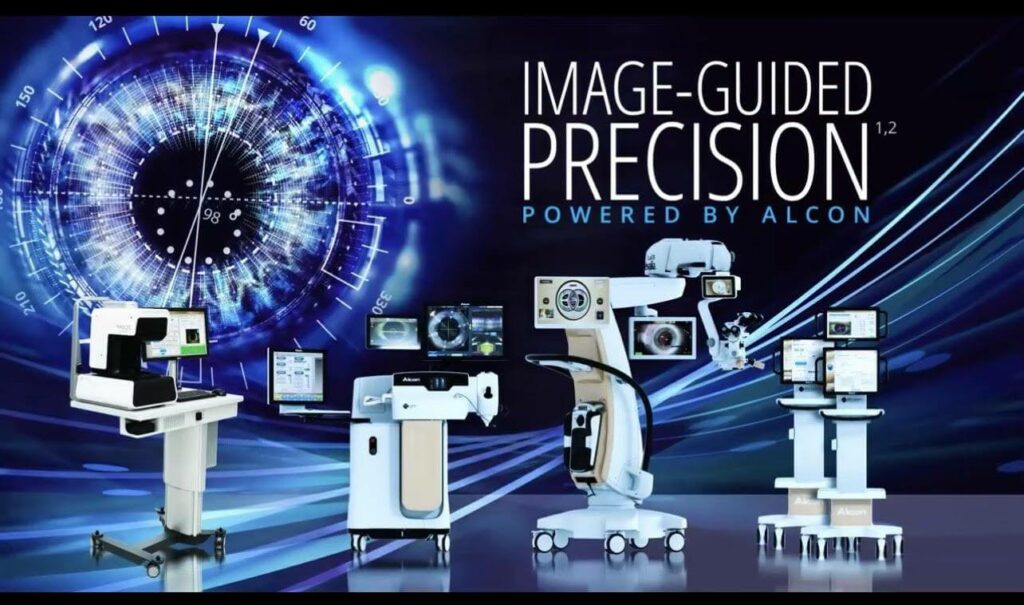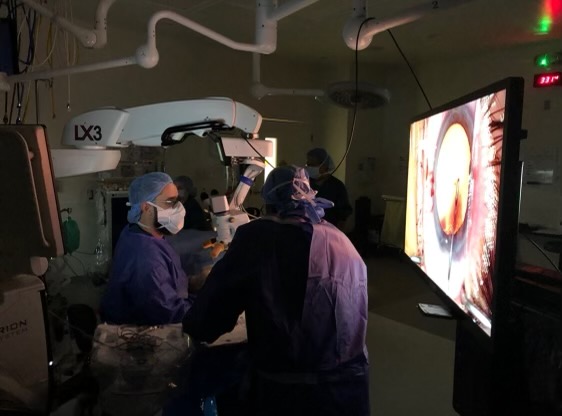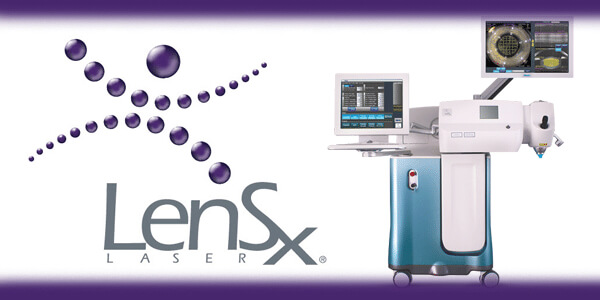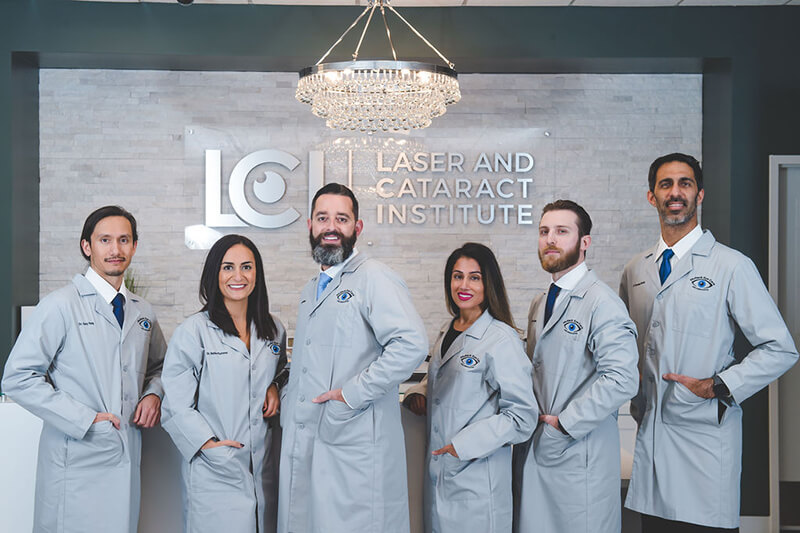Cataract Surgery

Cataract Surgery: Things You Should Know
Cataracts are a clouding of the otherwise clear lens of the eye. This condition is very common and is most commonly associated with aging, though anyone of any age can develop cataracts. For people who suffer with the condition, blurry vision and glare from bright lights can make it difficult to perform normal, everyday tasks like driving, reading, preparing meals and doing housework. Vision obstructions caused by cataracts can lessen quality of life and force reliance on others on a day to day basis.
Cataract surgery can help restore vision and re-establish independence in daily life. Performed by a trained ophthalmologist, cataract surgery involves the removal of the eye’s natural lens – often using lasers for more precise treatment and a faster recovery. The old lens is removed and replaced with a new one made of silicone or acrylic. These lenses can also be created to specific powers in order to restore visual acuity and lessen dependence on glasses.
Cataract surgery is an outpatient procedure that can be performed with or without sedation, the surgery typically takes under 15 minutes. Cataract surgery is very common, and it is successful without major complications in approximately 98-99 percent of patients. However, it is important to discuss cataract surgery risks with an ophthalmologist before undergoing the procedure. At Multack Eye Care, we specialize in cataract surgery and perform thousands of surgeries per year with the latest and most advanced technology available. Cataracts will not harm the eye, so waiting to have the surgery does not pose a threat to future vision. There are two types of cataract surgery currently available: traditional cataract surgery and laser-assisted cataract surgery.
Which One is Right For You?
Multack Eye Care offers both and can help you decide on the best option for your vision and lifestyle needs. Here’s what you need to know about both types of cataract surgeries.
What Are Cataracts?
Preparing For Cataract Surgery
Cataract Surgery Basics
LensX Laser System
Laser Surgery Vs. Traditional
Traditional Cataract Surgery
Traditional cataract surgery, also called phacoemulsification or manual cataract surgery, is the older and more commonly used type of cataract surgery. In both traditional and laser cataract surgeries, the cloudy lens is removed and usually replaced with an intraocular lens (IOL).
In traditional surgery, the ophthalmologist makes an incision near your cornea. Through this incision, the doctor inserts a thin probe with which to transmit sound waves, or ultrasound, to break up the cloudy lens. The broken pieces of the lens are then suctioned out, and a new artificial IOL is inserted to replace the damaged lens.
Because the incision is so small, it self-seals, and no stitches are required.

Laser-Assisted Cataract Surgery
Laser surgery, also called laser-assisted surgery, is a newer, more cutting-edge type of procedure developed in the last decade. Instead of the surgeon making the decision where to make the incision or cutting by hand, the surgeon uses an imaging, or mapping, device to scan your eye and determine the best location, size, and depth of the incision — and then the laser makes it.
This device also softens the cataract before using ultrasound waves to shatter the lens and suction the pieces away from the eye, as with traditional cataract surgery. The small incision in laser surgery self-seals without stitches.

After Cataract Surgery
Both surgeries have the same recovery period with most patients experiencing vision improvements within a couple of days. Both have minimal side effects and both require the same amount of eye drops to be taken post op.
Which type of surgery should you choose?
Because laser eye surgery uses a mapping device to pinpoint the ideal location and size of the incision, the ophthalmologist can make more accurate and precise incisions in less time than traditional surgery. Studies have not shown either option to be superior.
But the two areas where laser surgery is thought to be the better option are for:
- Correcting astigmatism
- Placing premium IOLs
Laser surgery can reshape your cornea to correct a small amount of astigmatism. And the laser-assisted technology also allows for optimal placement of the IOL.
For more information on which cataract surgery is the right option for you, request an appointment at one of our convenient locations.

In Office Cataract Surgery
Did you know Multack Eye Care can now offer in office Cataract Surgery at our very own in-office surgery center? Laser and Cataract Institute (LCI), is located in our Frankfort office. And like Multack Eye Care, LCI only offers the most advanced and modern equipment in a comfortable relaxing facility to give you the best experience and vision possible. From our massage chairs in pre-op, personal care each step, and our superior advanced technology like our 3d digital imaging, Laser and Cataract Institute only offers the best for our patients. LCI is fully accredited by The American Association for Accreditation of Ambulatory Surgery Facilities. LCI is not only advanced with its technology but also with who performs surgery there. Multack Eye Care and LCI only partners with the most skilled, board certified, and talented surgeons around to make sure you are in the absolute best hands and care possible. Our affiliated doctors utilize the latest technology to provide you with the best possible outcome, fastest recovery in a safe, comfortable, and convenient environment. Our entire surgical center and team have been prepared and trained to make this the best experience possible for your eye care journey. We are committed to delivering the world’s best to you. So whether you need a quick turnaround for surgery with your schedule, you don’t have insurance, or you’d rather not have surgery in a public surgery center or hospital and like a personalized touch, LCI is the right choice for you, Come See the Difference Today!
Advantages of an Office-Based Surgery Center
Office-based surgery centers are becoming the facilities of choice for some surgeons and their patients. These facilities allow tighter control of the surgical process from start to finish, including the patient experience, infection control protocols, and schedule timelines and flexibility.
